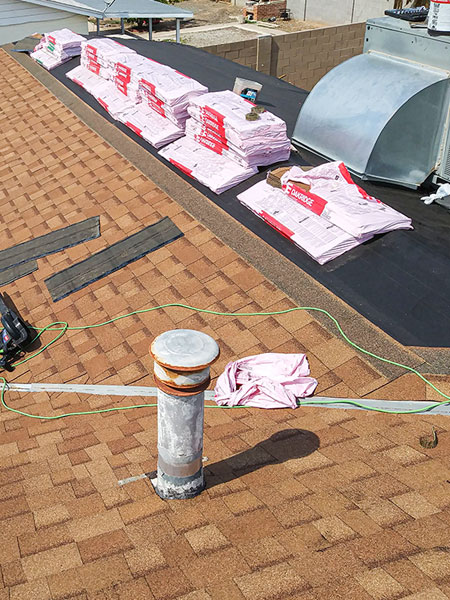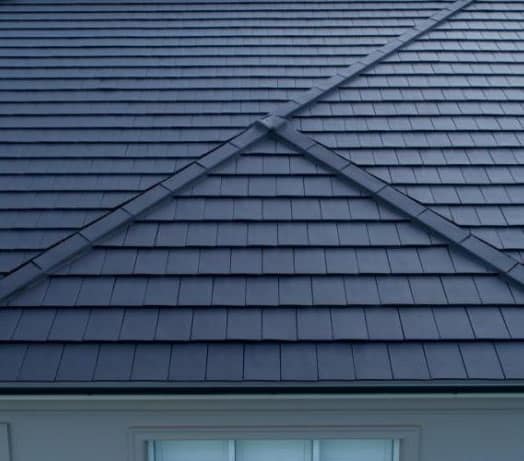Roofing is an area of construction and architecture that has seen significant advances in recent years. From modern materials to improved installation methods, the future of roofing holds many exciting possibilities for homeowners and builders alike.
This article seeks to explore current innovations and trends in the field of roofing, examining how these developments may shape the industry going forward.
The array of new materials and technologies available today allow unprecedented freedom when it comes to designing a durable and aesthetically pleasing roof system. Whether incorporating traditional or cutting-edge elements into their designs, architects can now provide clients with roofs that meet all their needs while still fitting within their budgets.
In addition, increased awareness of environmental issues leads many manufacturers to focus on developing sustainable solutions that are cost effective as well as long lasting. With such advancements being made in the sector, this article looks at some of the most important developments currently shaping the world of roofing.
Modern Materials
The roofing industry is constantly changing and evolving, as manufacturers develop new ways to make roofs safer, more durable, and longer-lasting. Modern materials are the key to a successful roofing project, offering better protection from the elements while reducing energy costs.
Asphalt shingles remain one of the most popular modern roofing materials due to their affordability and relative ease of installation. However, metal roofs have become increasingly popular in recent years for both residential and commercial properties due to their durability and fire resistance.
Clay tiles also offer an attractive option that can last up to fifty years or more with minimal maintenance. Additionally, slate has gained popularity in many areas because it provides superior wind resistance and aesthetic value. The combination of these materials allows homeowners and business owners alike to find options that best fit their needs without sacrificing quality or longevity.
No matter what type of material is chosen for use on a rooftop structure, proper installation is essential for ensuring a safe and secure building throughout its life span. Professional contractors should be consulted when considering any kind of major home improvement projects such as reroofing in order to guarantee success.

With the help of experienced professionals utilizing modern materials, future rooftops will continue to provide reliable protection for homes and businesses for many years to come.
Improved Installation Methods
Modern roofing technology is constantly evolving and developing, leading to improved installation methods. The use of modular roof systems has become increasingly popular as they often require less labor, time and tools for the job than traditional roofing installations. This type of system enables individual panels or tiles to be installed quickly, helping to reduce the overall cost of a project while ensuring a high-quality finish that lasts.
Additionally, advances in adhesive products have allowed roofs to be sealed more securely without relying on nails and other fasteners. As such, it can now be possible to complete an entire roof installation with fewer materials and less manual labour involved.
The development of new materials has also revolutionized the way roofs are constructed and maintained by providing better weatherproofing protection against water ingress and higher resistance to wind uplift forces. For example, polymer membranes can provide superior strength compared to traditional felt underlayment sheets due to their increased thickness which allows them to better withstand extreme temperatures.
Furthermore, newer asphalt shingle designs feature advanced granule coatings that help improve reflectivity from UV radiation and increase lifespan significantly when compared with older models. Overall, these advancements in both material construction and installation techniques have enabled architects, contractors and homeowners alike to benefit from greater efficiency when it comes to installing a durable rooftop solution.
Design Flexibility
Design flexibility is an important aspect of roofing that offers many benefits. It allows homeowners, contractors and architects to create aesthetically pleasing designs while meeting the functional needs of a given project.
With the help of advances in technology, design flexibility has become even more efficient and cost-effective for both residential and commercial projects.
Roofs can be designed with custom shapes, sizes, materials and colors to match any building architecture or landscape. This enables builders to customize their roofs according to specific requirements such as climate control and weather protection.
Additionally, new developments in roofing systems provide better durability, improved energy efficiency and enhanced safety features. Such advancements not only make roofs stronger but also reduce maintenance costs over time by eliminating costly repairs due to damage caused by extreme weather conditions.
Sustainable Solutions
The roofing industry is rapidly evolving, with sustainability at the forefront of many new innovations. With an increasing awareness of environmental issues and an emphasis on energy efficiency, roofers are developing products that reduce emissions and resource use, while providing superior protection for homes and businesses.
As a result, sustainable solutions are becoming increasingly popular in this sector. From recycled materials to solar installations, there are numerous options available when it comes to creating roofs with minimal impact on the environment. Roofing companies have developed environmentally friendly shingles made from recycled plastics or rubber tires, as well as tiles crafted out of renewable resources like bamboo or cork.
Solar panel systems can also be integrated into existing roof structures to generate electricity and provide additional insulation benefits. Through these advances, homeowners can enjoy the advantages of high-performance roofing without sacrificing their own commitment to protecting the planet.
Roof Systems With Added Benefits
Sustainable solutions to roofing represent a paradigm shift in how the industry approaches its business practices. As such, there is an increased focus on roof systems that offer added benefits beyond longevity and durability.
These roof systems integrate innovative technologies designed to reduce energy costs while also increasing occupant comfort. For instance, cool roofs are becoming increasingly popular due to their ability to reflect sunlight and absorb less heat than traditional materials.
This reduces the amount of energy needed for cooling inside the building or home, which can lead to lower overall energy bills as well as reduced environmental impacts associated with heating and cooling. In addition, many modern roof systems come with built-in insulation that helps contain heated air during winter months, allowing buildings and homes to stay warmer without having to use additional energy sources like furnaces or space heaters.
Automation And Robotics
The emergence of automation and robotics in the roofing industry has been steadily increasing over recent years. The application of such technologies can significantly improve productivity and reduce labor costs, allowing businesses to remain competitive while providing quality services. Automated processes enable a greater level of accuracy as well as improved safety due to the lack of manual error or intervention required.
Additionally, robotic systems are capable of performing jobs which would otherwise be impossible for humans to do on their own – from high-altitude work to hazardous areas that may contain asbestos or other harmful materials. Robotics also make it possible for contractors to inspect roofs without having to physically climb them, reducing risk and improving efficiency.
Drones equipped with infrared cameras allow technicians to capture images and thermal readings even when working at great heights – giving them an accurate assessment of the condition of the structure before beginning any repairs or installations. This technology helps ensure that only necessary work is done, avoiding unnecessary expenses and delays caused by unforeseen damage or defects in existing structures.

Artificial Intelligence And Machine Learning
The application of artificial intelligence (AI) and machine learning in roofing has the potential to revolutionize the industry.
AI technology can help maximize efficiency, reduce time spent on manual labor, increase safety compliance, and even predict maintenance needs.
With access to big data sets, machines are able to better understand what they see without having to rely solely on human interpretation or experience.
For example, AI applications can recognize patterns that would be difficult for humans to detect using traditional methods.
This allows them to make decisions faster than ever before and identify problems in a fraction of the time it would take an individual contractor or inspector.
AI also introduces advanced automation techniques into the process of building roofs; this helps manufacturers save money by reducing labor costs associated with construction projects.
Automated systems can track progress more accurately and respond quickly when issues arise during installation or repair phases.
In addition, machines can generate detailed reports about completed work which provides contractors with valuable information about their performance as well as insight into how best to improve future projects.
By leveraging these tools, companies may be able to stay ahead of competitors while providing superior service at competitive prices.
Conclusion
The roof is an essential part of a home, and advancements in technology have led to many new innovations that can benefit homeowners.
It is clear that modern materials, improved installation methods, design flexibility, sustainable solutions, and roof systems with added benefits are all important aspects of the future of roofing.
Furthermore, automation and robotics combined with artificial intelligence and machine learning offer additional potential for further improvement.
In summary, the future of roofing looks incredibly promising as these developments will enable faster and more efficient construction processes while also providing greater protection against the elements.


